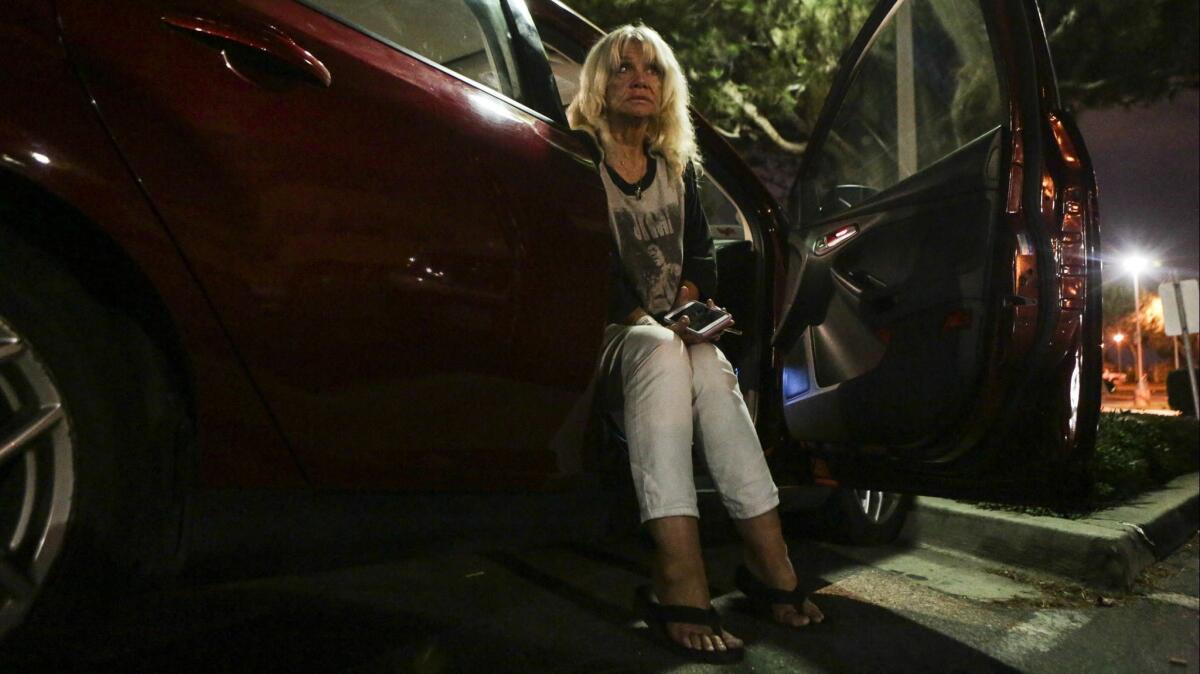Editorial: It’s already hard to get a Section 8 voucher. It’s even harder to find a landlord willing to take it

- Share via
Housing subsidies are one of the fastest ways to get a homeless person off the street or to prevent someone from becoming homeless in the first place. Federal subsidies — dispensed through Section 8 vouchers and other forms of aid for renters — use public dollars to make up the difference between what a person can afford to pay for an apartment and what landlords typically charge for one. They’re an essential tool to help Los Angeles end its homeless crisis.
But there is a problem: A growing number of landlords won’t even considering leasing to tenants with vouchers or other forms of government rental assistance.
Roughly half of the people in Los Angeles who held Section 8 vouchers in late 2018 had been unable to find an apartment within six months, as required, so they lost the voucher or had to restart the referral process for assistance. That’s the highest failure rate in city history. And it’s especially heartbreaking because it’s so hard to get into the Section 8 program in Los Angeles — roughly 1 in 30 people who apply for the assistance will actually get a voucher because the demand greatly exceeds the supply.
Barring landlords from discriminating against voucher holders will at least allow would-be tenants an opportunity to get their foot in the apartment door.
The search for a willing landlord is even harder for homeless veterans; just 45% of those with special Department of Veterans Affairs-supported vouchers find a unit, according to the Housing Authority of the City of Los Angeles.
Yes, Section 8 and other rental subsidy programs come with rules and bureaucracy. But housing advocates argue that landlords too often adopt blanket “No Section 8” policies as a way to discriminate against the poor — and by extension, against the minorities and families that would otherwise have been protected by federal fair-housing law.
A Housing and Urban Development Department-funded study released last year showed just how difficult it can be for a voucher holder. Researchers combed through rental ads looking for units that met the requirements for vouchers, and then inquired about those units. But some 76% of the landlords contacted in Los Angeles County refused to accept vouchers. The denial rate was higher in more affluent communities, where 82% of landlords wouldn’t take vouchers.
The HUD study found that in Washington, D.C., and Newark, N.J., which have laws that prohibit landlords from discriminating on the basis of income, denial rates were much lower — 15% and 31%, respectively.
Earlier this month, the Los Angeles County Board of Supervisors voted to draft a law that would prohibit landlords from rejecting would-be tenants solely based on their use of a Section 8 voucher or other subsidy. The Los Angeles City Council is considering a similar law.
L.A. leaders are joining a growing number of jurisdictions trying to ensure that vouchers remain a viable form of housing assistance. A dozen states outside California and numerous cities ban landlords from discriminating against applicants based on the source of their income in an effort to protect tenants with rental subsidies.
These laws don’t require that landlords rent to Section 8 tenants; landlords simply have to treat tenants with vouchers the same as any other prospective tenant. Property owners would still be able to screen tenants for rental or credit history, check references and set other common standards.
Landlords argue that the current, high denial rate isn’t driven by discrimination, but by the excessive paperwork, inspections and restrictions that come with rental subsidy programs. For example, it’s hard to raise the rent, even modestly, on voucher tenants.
Enter the Fray: First takes on the news of the minute »
Meanwhile, the supposedly “market rent” the federal government covers is too low for L.A.’s overheated rental market. Section 8 vouchers can’t be used on units that charge more than the market rent, which the federal government says is $1,384 for a one-bedroom apartment. The market says otherwise: The median rent listed for a one-bedroom apartment in the county is around $2,200, according to Zillow.
Those are legitimate concerns that city and county leaders — as well as the federal government — have to address.
It’s clear that for the Section 8 program to be truly successful in Los Angeles County, HUD has to take into account the high cost of housing here and significantly increase funding. The city and county also have to make it as easy and efficient as possible for landlords to participate in the program. That could include offering landlords incentives to accept vouchers, such as giving them “holding fees” to keep a unit vacant while the voucher rental agreements are being approved.
Voucher holders will still struggle to find homes as long as Los Angeles remains a highly competitive, low-vacancy rental market. But barring landlords from discriminating against them will at least allow would-be tenants an opportunity to get their foot in the apartment door.
Follow the Opinion section on Twitter @latimesopinion and Facebook
More to Read
A cure for the common opinion
Get thought-provoking perspectives with our weekly newsletter.
You may occasionally receive promotional content from the Los Angeles Times.









